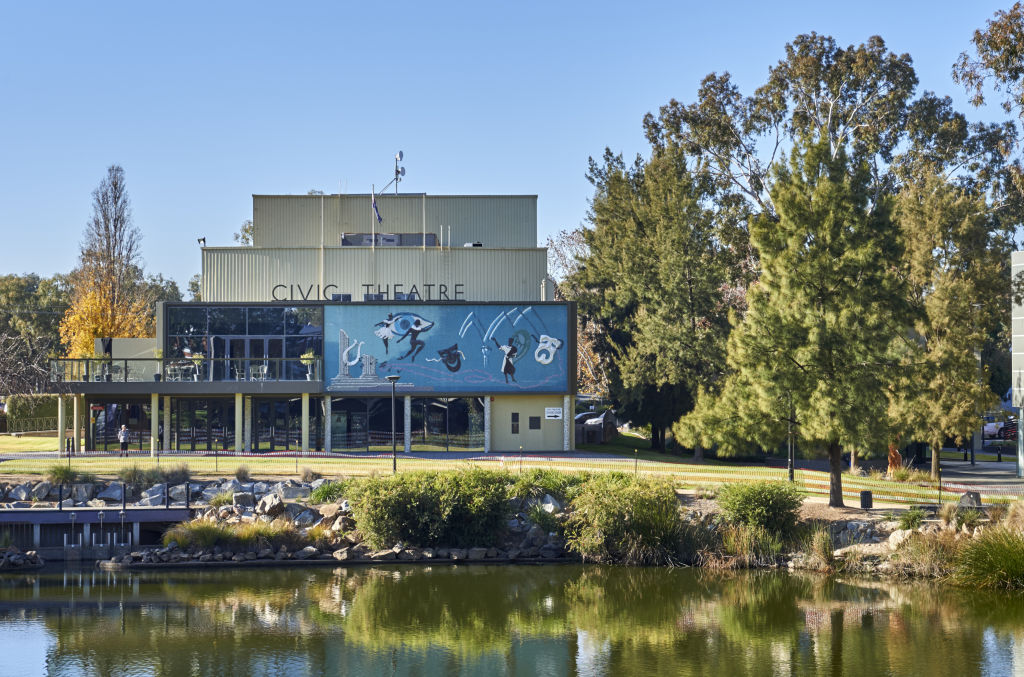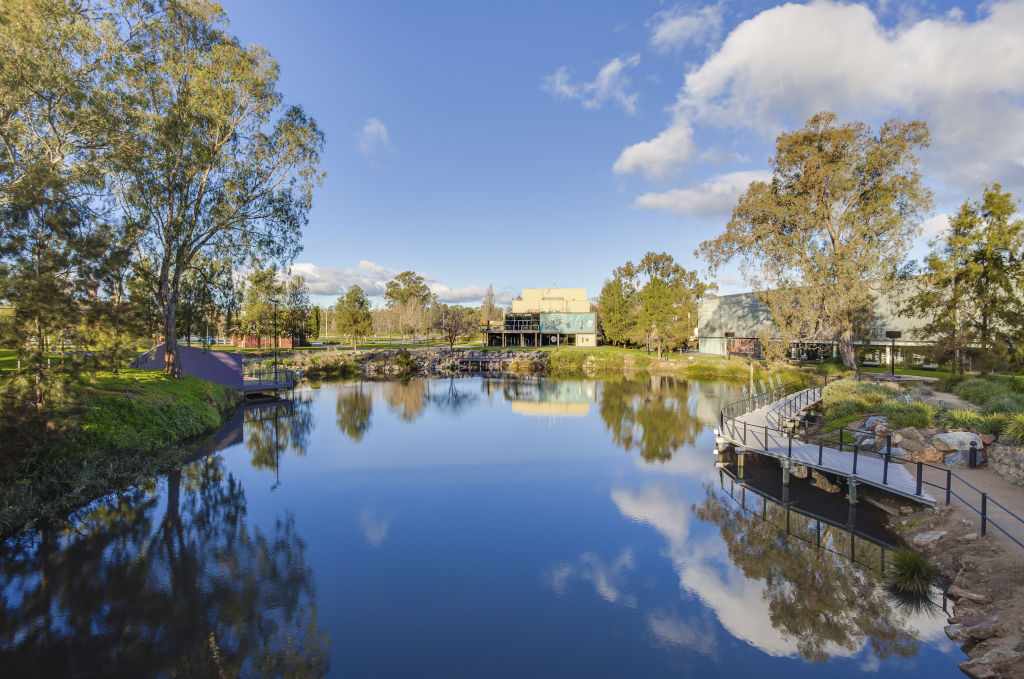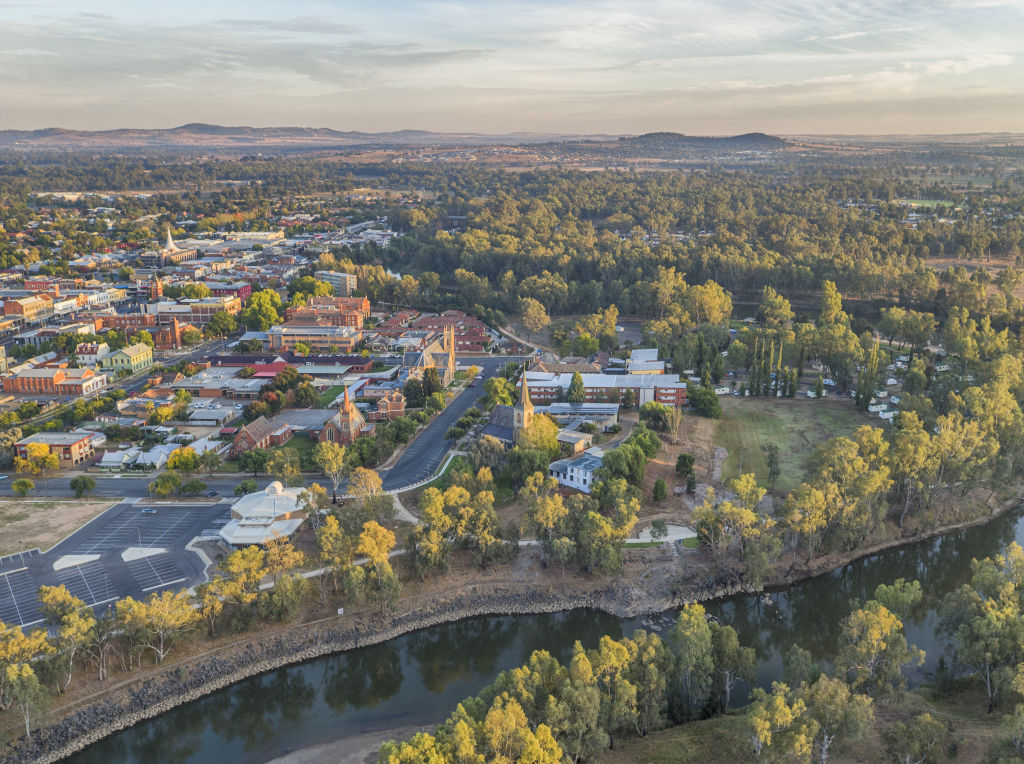Tamworth has a proud reputation as Australia’s country music capital, playing host to an annual music festival that doubles the city’s population in a non-pandemic year.
When the last busker has left Peel Street, the northern NSW city however still boasts plenty of attractions for visitors and residents.
East Tamworth, the oldest part of town, is a hotbed of historical charm, with wide, tree-lined streets and beautiful Victorian and Federation architecture.
As the main administrative centre of north-west NSW, Tamworth has a diverse economy with jobs in health, agriculture, education, mining, retail and manufacturing.
The city is a hub for equine events and services.
Aviation is another key industry, as many visitors choose to fly rather than drive to Tamworth. (It takes five hours to drive from Sydney and seven hours from Brisbane.)
Jacqui Powell, who owns Partner Now Property, describes Tamworth as an outstanding place to raise children.
“We’ve got so many wonderful schools, so many sporting facilities and places for music and the arts,” Powell says. “And it’s very, very safe.”
Tamworth is on a narrow point on the Peel River floodplain, west of the Great Dividing Range.
The city centre is located on the north-east bank of the river.
“The main street is one of the prettiest in any country town,” Powell says.
“It’s very leafy and wide, with a median strip through the middle and trees the whole way down.”
Residents have access to an impressive range of parks and playgrounds, including sprawling botanic gardens and Anzac Park.
Paths run along the river and work is underway to improve the city’s network of cycleways.
Properties range from historical homes to contemporary builds in new estates.
Demand from out-of-town house hunters, including investors, has surged over the past 12 months, pushing up prices and driving down the availability of rentals.
“There are so many families moving back. They often want to rent for a little while as they’re building or while they’re deciding where they want to be.”
When Kate Richards lost her job with an airline last year, she found work as a flight instructor and charter pilot with Airspeed Aviation.
“Predominantly, I instruct, so locals come when they want to get their private pilot’s licence,” Richards says.
“I’ll teach them everything from the basics of flying straight and level through to navigating and how to get themselves from A to B.”
Richards considers herself fortunate to have picked up work in the industry when so many of her former colleagues did not.
Relocating from Brisbane to Tamworth was another bonus.
“It’s a very friendly place to live,” she says.
“Sometimes people stop you as you’re walking through the main street to have a chat. There are lots of nice places you can walk [and] lots of good cafes, restaurants and places for a few beers.”
Source: Domain
For city dwellers feeling hemmed in by tiny apartments or fed up with interminable commutes, the fantasy is often a house in the bush or by the beach.
Whether it’s a sea change or a tree change, the idea of getting away from it all is a spellbinding prospect, perhaps never more so than in the middle of a pandemic.

But not all escapes need to end down some country lane far from the conveniences of city life.
Take Wagga Wagga. Going by median prices, you could snap up three houses in this regional city for the price of an average Sydney pad.
And you wouldn’t be giving up great healthcare, schools, jobs, sports, culture or a burgeoning foodie scene.

“Wagga is surprisingly citified,” says Paul Gooden, a director at Fitzpatricks Real Estate. “Aside from not having the coastal advantage of mild weather and the beach, it’s really quite a sophisticated place to be.”
Since the COVID-19 pandemic struck, Gooden has received steady inquiries from people considering selling homes in Sydney, Melbourne or Canberra and buying in Wagga.
“What you’d pay $1.7 million for in Sydney, you could buy for $700,000 in Wagga.”

Wagga, a main hub in the Riverina, is the largest inland city in NSW. Agribusiness and healthcare are huge job providers. It is home to a Charles Sturt University campus and the biggest TAFE campus in the Riverina, as well as air force and army bases.
Agribusiness and healthcare are huge job providers. Wagga is also home to a Charles Sturt University campus and the biggest TAFE campus in the Riverina, as well as air force and army bases.
The private sector has taken over many roles previously conducted by the military, “so there’s a more permanent population working in defence,” Gooden says, “rather than troops coming and going.”
The train from Wagga to Sydney takes a little over six hours. For decades, there’s been talk of including the city on a high-speed rail link between Sydney and Melbourne, but the project still hasn’t moved from vision to delivery.
More promising are confirmed plans for a freight and logistics hub in Wagga connecting Riverina producers and exporters to the inland rail line. The new project is predicted to create up to 6000 jobs.
House hunters will find properties ranging from pretty heritage-listed Victorian and Federation houses near the city centre to newer apartments, townhouses and freestanding houses in the suburbs and stylish contemporary residences in the suburbs, master-planned estates or acreages out of town.
There are regular local buses and council is building a network of cycle paths linking the outer suburbs with the CBD, including end-of-trip facilities.
Bob Wheeldon recently listed his home on nearly 40 hectares in Gumly eight kilometres east kilometres of central Wagga (see below).
“It has the benefit of being just outside of town, so you can have access to the university, restaurants and services of the town and it’s also on the highway, providing access back to Sydney or to the airport,” Wheeldon says.
Combining a country town feel with urban mod-cons, Wagga offers the best of both worlds.
“You’re not going to get the Rolling Stones playing there but it’s easy enough to hop on a plane to Sydney or Melbourne.”